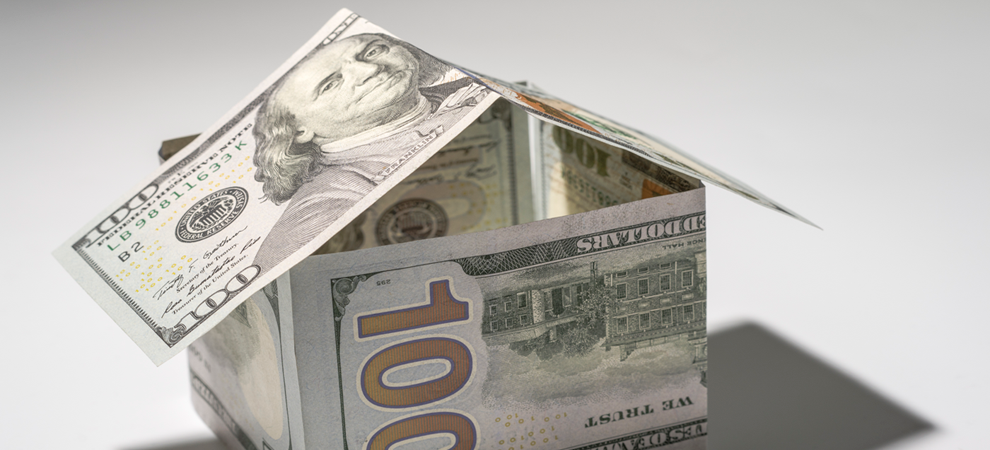
World Property Journal Residential | News » Washington D.C. Edition | By Monsef Rachid | February 14, 2018
U.S. Home Prices Up 5.3 Percent in Fourth Quarter of 2017
According to Realtors, an uptick in existing U.S. home sales in the final three months of 2017 pulled down housing inventory to an all-time low, while keeping home-price growth at its recent robust pace.
The national median existing single-family home price in the fourth quarter was $247,800, which is up 5.3 percent from the fourth quarter of 2016 ($235,400). The median price during last year's third quarter climbed 5.6 percent from the third quarter of 2016.
Single-family home prices last quarter increased in 92 percent of measured markets, with 162 out of 177 metropolitan statistical areas showing sales price gains in the fourth quarter compared to a year ago. Twenty-six metro areas (15 percent) experienced double-digit increases (11 percent in the third quarter), and 18 metros eclipsed their previous peak sales price. Overall, home prices are now at their all-time high in 114 markets (64 percent).
Lawrence Yun, NAR chief economist, says 2017 capped off another year where home prices in most markets ascended at a steady clip amidst improving sales and worsening inventory conditions. "A majority of the country saw an upswing in buyer interest at the end of last year, which ultimately ended up putting even more strain on inventory levels and prices," he said. "Remarkably, home prices have risen a cumulative 48 percent since 2011, yet during this same timeframe, incomes are up only 15 percent. In the West region, where very healthy labor markets are driving demand, the gap is even wider."
Added Yun, "These consistent, multi-year price gains have certainly been great news for homeowners, and especially for those who were at one time in a negative equity situation; however, the shortage of new homes being built over the past decade is really burdening local markets and making homebuying less affordable."
Total existing-home sales, including single family and condos, increased 4.3 percent to a seasonally adjusted annual rate of 5.62 million in the fourth quarter from 5.39 million in the third quarter, and are 1.3 percent higher than the 5.55 million pace during the fourth quarter of 2016.
At the end of the fourth quarter, there were 1.48 million existing homes available for sale, which was 10.3 percent below the 1.65 million homes for sale at the end of the fourth quarter in 2016. The average supply during the fourth quarter was 3.5 months - down from 4.2 months in the fourth quarter of last year.
The national family median income rose to $74,492 in the fourth quarter, but overall affordability still edged downward compared to a year ago because of the combination of rising mortgage rates and home prices. To purchase a single-family home at the national median price, a buyer making a 5 percent down payment would need an income of $55,585 a 10 percent down payment would require an income of $52,659, and $46,808 would be needed for a 20 percent down payment.
"While tight supply is expected to keep home prices on an upward trajectory in most metro areas in 2018, both the uptick in mortgage rates and the impact of the new tax law on some high-cost markets could cause price growth to moderate nationally," said Yun. "In areas where homebuilding has severely lagged job creation in recent years, it's going to be a slow slog before there's enough new construction to cool price appreciation to a pace that aligns more closely with incomes."
The five most expensive housing markets in the fourth quarter were the San Jose, California metro area, where the median existing single-family price was $1,270,000; San Francisco-Oakland-Hayward, California, $920,000; Anaheim-Santa Ana-Irvine, California, $785,000; urban Honolulu, $760,600; and San Diego-Carlsbad, $610,000.
The five lowest-cost metro areas in the fourth quarter were Cumberland, Maryland, $84,600; Youngstown-Warren-Boardman, Ohio, $90,200; Decatur, Illinois, $100,000; Binghamton, New York, $108,900; and Wichita Falls, Texas, $110,400.
Metro area condominium and cooperative prices - covering changes in 61 metro areas - showed the national median existing-condo price was $237,500 in the fourth quarter, up 7.0 percent from the fourth quarter of 2016 ($222,000). Eighty-four percent of metro areas showed gains in their median condo price from a year ago.
Regional U.S. Breakdown
- Total existing-home sales in the Northeast jumped 10.1 percent in the fourth quarter but are 0.4 percent below the fourth quarter of 2016. The median existing single-family home price in the Northeast was $268,100 in the fourth quarter, up 4.2 percent from a year ago.
- In the Midwest, existing-home sales rose 6.0 percent in the fourth quarter and are 2.3 percent above a year ago. The median existing single-family home price in the Midwest grew 7.2 percent to $193,800 in the fourth quarter from the same quarter a year ago.
- Existing-home sales in the South increased 3.8 percent in the fourth quarter and are 1.8 percent higher than the fourth quarter of 2016. The median existing single-family home price in the South was $221,600 in the fourth quarter, 5.0 percent above a year earlier.
- In the West, existing-home sales in the fourth quarter were at an annualized rate of 1.23 million (unchanged from the third quarter), up 0.3 percent from a year ago. The median existing single-family home price in the West increased 7.2 percent to $374,400 in the fourth quarter from the fourth quarter of 2016.


